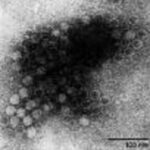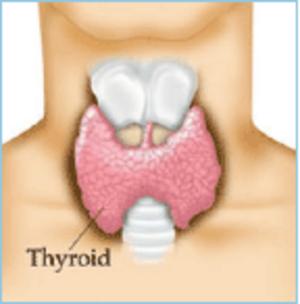Parvo, a debilitating disease that can devastate entire neighborhoods of family pets, is extremely dangerous, yet also very preventable. There are two forms of this virus, one that affects the heart and another that affects the intestinal tract, and once contracted either form can be fatal. Perhaps the most dangerous aspect of this virus is that the public is so ill informed on its prevalence and hazardous potential.
Parvo is formed from the waste of animal and plant organisms, and can be found in feces, the soil, or from contact with other infected animals. The symptoms may appear to resemble that of other, more common infections in dogs, however anytime an animal is exhibiting these signs of illness it should immediately be taken to a qualified veterinarian for treatment and Parvo testing. Symptoms include diarrhea, vomiting, loss of energy, lack of appetite, and sometimes bloody feces. Often, there is a distinct smell that the dog and its excretions will carry. Another major indicator of this infection is its sudden onset. One day your dog will be playing in your yard, and the next it will barely be able to lift its head. If this happens, do not waste time waiting on symptoms to disappear on their own. While dogs will have their minor illnesses from time to time, sudden onset of these symptoms is a very clear sign of an immediate medical need. As survival of this virus is dependent upon quick treatment (dogs can die within hours of noticeable symptoms), it is imperative that owners are aware of what to look for in dogs that have not been vaccinated.
Because infection is most likely to become fatal in puppies one year of age or younger, vaccination at the earliest possible time is absolutely mandatory. Puppies are generally protected from Parvo while nursing because the mother will provide antibodies from her own system (provided that she is vaccinated and has no chance of being infected herself). As many older dogs may not show symptoms of this disease, mothers must be vaccinated for the protection of the puppies (see your vet for details, and make sure to let him/her know that your dog is nursing, as this may affect what vaccines she can receive safely). After the puppies have begun the transition from nursing to regular food, they are at risk for Parvo infection. This is a delicate stage, as nursing antibodies may interfere with vaccines and their effectiveness, therefore vaccinations are given in rounds that occur over several weeks. During this time, keep the puppies and the mother away from other dogs, and if possible keep them away from the soil and indoors as much as possible. Use “puppy pads” to teach indoor potty training during this time, and remember to give your dog and puppies and adequate amount of playing space. When your vet tells you that vaccinations are complete and that your puppies are now safe, you can feel free to let them out of doors much more often.
If you have a dog or puppy that has is showing signs and symptoms of this disease already, your first job is to stop reading this article and take your pet in for treatment. If your vet is not open for business at this time, do not wait until he/she is. A few hours can make all the difference. Immediately locate an after-hours emergency animal hospital. If there are none in your community, either locate one in another community or call your vet at home. If he/she asks you to wait and bring your pet in when his/her business is open, call another vet. You do not have time to waste. Next, expect a lengthy treatment process. Your pet will be put on IV fluids and antibiotics, but essentially it will be you and your vet’s job to wait this virus out and keep your pet from dying of dehydration in the meantime. This is more difficult than it sounds. Allow your vet to keep your pet for treatment for as many days/nights as it takes. Survival for treated animals is on the rise, however the treatment is exhaustive, somewhat expensive, and must be followed through to full recovery. Even a few hours away from the vet can be a fatal decision, therefore you must allow your pet to stay as long as his doctor believes is necessary. Many pet owners are inclined to desire to take their suffering pets home early and treat them themselves. Be strong for your dog, and do not make this mistake.
Finally, if your dog is successfully treated, be sure to keep a watch on him/her for dehydration or contraction of other diseases, as his/her immune system will be down for a while due to the stresses of the attack. Also, understand that your home and yard will need extensive treatment to kill the virus that is now embedded in them. Buy a large spray bottle and create a strong mixture of bleach and water to pour into it. Spray this mixture on feces and urine areas, indoor and outdoor (and pay no heed to the temporary damage this might do to your lawn). Spray and cleanse countertops, walls, and anything that you or your pet may have come into contact with. Next, use color-safe bleach to treat carpets, window treatments, blinds, bedding, clothing, shoes, and anything else that may have come in contact with your pet or may in the future. This deep cleansing must be done whether or not your pet has survived, as the Parvo virus has the ability to survive for up to a year or longer. Any other pets brought into your yard or home can pick up the disease long after your first one was infected. Because this is true, it is your duty to knock on doors and make phone calls in order to notify neighbors of the disease’s presence in your yard and in the area. Let them know the signs, symptoms, and treatment available as well. Do this as soon as your dog is diagnosed to prevent further spread of this horrible disease.




